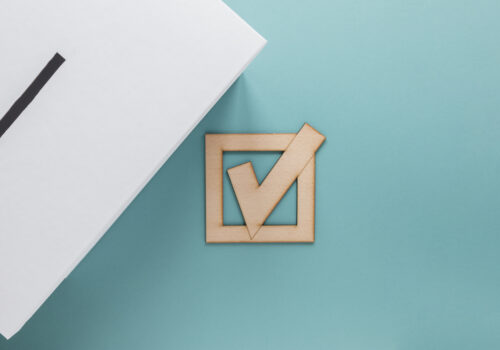Mobile driver’s licenses (mDLs) are a new wave of digital ID, stored securely in a user’s mobile wallet and built to transform how people prove their identity both online and in person. By utilizing robust state regulations and the ISO 18013-5 standard, mDLs offer a reliable system for secure, interoperable identity credentials. This article covers how biometrics and advanced security features work together to prevent fraud and strengthen authentication, while encryption and cryptographic techniques protect users from identity theft.
We will also explore practical use cases across industries such as travel, financial services, and retail, highlighting how mDLs streamline identity workflows. Finally, the discussion will address major challenges and new trends shaping the widespread adoption of mDLs, helping businesses and verification providers understand the future landscape of digital identity.
What Is a Mobile Driver’s License and How Does It Enhance Identity Verification?
A mobile driver’s license (mDL) is a digital version of a traditional driver’s license, issued by a government agency and safely stored within a mobile wallet or app. mDLs differ from physical cards because they employ cryptographic techniques to selectively reveal identity details, ensuring that only the required data for verification is disclosed. This selective disclosure reduces unnecessary data exposure and improves user privacy.
By using asymmetric cryptography and digital signatures, mDLs provide a strong way to prove identity that is much harder to fake than physical IDs. This allows for quick, contactless identity verification whether in person, like at kiosks or checkpoints, or online through cryptographically verifiable proofs.
Key features that make mDLs valuable for secure identity verification include:
- Selective Disclosure: Revealing only the required identity details to minimize data leakage.
- Cryptographic Authenticity: Digital signatures confirm the ID’s authenticity beyond simple visual checks.
- Frictionless Transaction: Contactless presentation methods speed up verification in both physical and online settings.
Together, these features make mDLs an effective solution for businesses seeking to balance privacy concerns with fraud prevention while enabling efficient identity verification.
How Do State Regulations and ISO 18013-5 Standards Shape mDL Adoption and Security?
State regulations and ISO 18013-5 standards plays a crucial role in how mobile driver’s licenses (mDLs) are created, issued, and verified. ISO 18013-5 sets clear guidelines for how mDLs should store data, how they should be presented (like using NFC or QR codes), and how their authenticity is verified using secure digital methods. This means a digital license issued in one state can be confidently verified in another, making the system more reliable and integrated.
ISO 18013-5 provides consistent rules for data and security, which helps both the people issuing the licenses and those verifying them avoid technical issues. When states adhere to these standards, organizations can trust that information such as name, age, or license status is accurate and securely verified.
As of 2025, the regulatory environment across U.S. states remains varied. Some states have fully launched mDL programs, others are running pilot tests, and many are still creating policies for use at checkpoints, transportation, and digital services.
Adoption levels depend heavily on factors such as:
- Legal acceptance of digital credentials
- Compliance with privacy and data-protection regulations
- Alignment with national and state-level verification policies
These legal and regulatory factors decide where mDLs can be used, how they complement physical IDs, and how fast they can be adopted across industries that need secure identity verification.
How Do Biometrics and Advanced Security Features Prevent Fraud in mDL Systems?
Biometrics and advanced security features work together to make mobile driver’s licenses (mDLs) difficult to forge or exploit. Biometrics, such as facial recognition or fingerprint scanning, help verify that the person using the mDL is the actual, live holder of the credential. At the same time, the device’s secure elements and attestation ensure the mDL is coming from an authentic wallet app on a trusted device, not from a cloned or manipulated source.
By combining these security measures with cryptographic checks, they form a strong, multi-layered defense. Cryptography verifies the credential’s authority, biometrics confirm the identity of the user, and device attestation ensures that the source is legitimate. These measures significantly reduce the risk of impersonation and large-scale fraud compared to physical IDs.
How Do Encryption and Cryptographic Verification Protect Against Identity Theft?
Mobile driver’s licenses (mDLs) use strong encryption and cryptographic techniques to secure identities and deter fraud. Using asymmetric cryptography, the issuing authority applies a private key to sign each digital license, while verifiers use a public key to confirm the signature’s authenticity. Alongside selective disclosure, encryption guarantees safe and confidential exchange of identifying information during verification.
Furthermore, real-time or cached revocation ensures that revoked or invalid licenses cannot be used, while device attestation confirms the credential of a trusted source. During a typical verification, the issuer signs the credential, the holder securely provides the required information, the verifier confirms the signature and revocation status, and may also carry out a biometric match. This layered approach minimizes the risk of identity theft, forgery, and disclosure of excessive personal data.
How Are mDLs Used in Travel, Financial Services, and Age Verification?
In the travel sector, mDLs offer checkpoint-ready credentials that integrate with facial recognition to speed up passenger processing without compromising security. In financial services, using cryptographic verification for identity details enhances Know Your Customer (KYC) processes and minimizes the risk of document fraud, allowing faster onboarding and safer transactions. In retail, particularly for age-restricted items, mDLs allow customers to prove they meet age limits (like being “over 21”) without exposing their entire identity, preserving privacy while maintaining compliance. Each scenario benefits from the selective disclosure and robust cryptographic security that mDLs provide, improving efficiency and privacy for both businesses and users.
What Are the Main Challenges and Future Trends for Widespread mDL Adoption?
mDL adoption is increasing, but it still faces several key challenges. Many states still don’t officially recognize them, restricting their usability. There are also privacy and trust concerns, with some users hesitant about keeping their ID on a mobile device. In addition, devices and wallet apps use various systems, resulting in inconsistencies that hinder smooth compatibility. Offline verification and strong revocation checks are still aspects that state and service providers need to improve.
Looking ahead, the future of mDL adoption is promising. Trends show increasing acceptance of ISO 18013-5 standards, which will improve compatibility across states and platforms. mDLs are likely to become more closely connected with wider digital identity systems, allowing seamless verification processes in industries like travel, finance, and government. As fraudulent tactics evolve, innovations like AI-driven fraud detection and enhanced device-level security will help verification against deepfakes, synthetic identities, and other new threats. These challenges and trends together map out the path for mDLs to evolve from early testing phases to broad, secure, and privacy-focused adoption across industries.
Mobile driver’s licenses are set to revolutionize identity verification by making it faster, safer, and more privacy-conscious. Even if adoption is still evolving, the technology is gaining traction in key areas. As standards develop, mLDs will play a growing role in how individuals confirm their identity in person and online.







